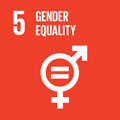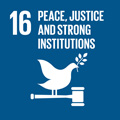- Docente: Riccardo Pirazzoli
- Credits: 4
- Language: Italian
- Teaching Mode: Traditional lectures
- Campus: Bologna
- Corso: Second cycle degree programme (LM) in Media, Public and Corporate Communication (cod. 5703)
-
from Sep 20, 2024 to Dec 06, 2024
Learning outcomes
The laboratory provides an introduction to the production of effective narrative content for different media contexts, with particular attention to digital environments. At the end of the laboratory the student: knows and knows how to use the main storytelling techniques; knows how to evaluate how the specific affordances of digital platforms influence the possibilities of using narrative styles and practices; has acquired basic skills for the use of the main tools for the production of audiovisual content for the web and digital platforms; is familiar with various case histories relating to storytelling campaigns and initiatives for businesses, institutions and the third sector.
Course contents
Attendance is strongly recommended, as you will work in groups as in an editorial office.
Instagram, TikTok, YouTube, Twitch will be the media analyzed.
Aware that a myth is a narrative that has made it, this workshop offers ideas for creating high-impact content through storytelling techniques (not to be confused with copy writing and content marketing).
The teaching mixes theoretical parts (with very practical implications) with practical activities and will provide many examples.
The first technique we will talk about is horizontal connection, which is the basis of a creative process. Examples will be provided to clarify how to construct meaningful content based on this technique. The layout of the content is an integral part of this technique, ideal for creating highly engaging social content.
The second technique is based on the process of consuming multimedia content, which can be summarized in three phases: cut-remix-share. Grice's maxims, synesthesia, minimalism, the use of color vs black, the concept of the new and, above all, identification (based on the 6 universal emotions) will be the concepts to be explored in depth. Especially for YouTube and social media that distribute video content, it is crucial to design narratives that can be broken into smaller parts.
The third technique, based on the use of emotions, has to do with the rhythm of stories. The hero's journey allows you to structure different narratives, with 3 or 5 hinges.
The fourth technique focuses on triggers and fears. The attention span of a digital user is very low, so this technique allows you to capture and maintain attention. We will see numerous examples.
Last technique: the construction of the TOV based on enunciative strategies. In this analysis, semiotics offers fundamental insights: enunciator/enunciator, débrayage, values...
Readings/Bibliography
Fundamental exam texts:
Fontana, Storie che incantano, ROI Edizioni
Fontana, Storytelling for dummies, Hoepli
Testa, Le vie del senso, Garzanti
Suggested texts for those attending/one of your choice mandatory for those NOT attending:
Falcinelli, Figure, Einaudi
Hobsbawm e Ranger, L'invenzione della tradizione, Einaudi
Han, Infocrazia, Einaudi
Grandi, DOI, Denominazione di origine inventata. Le bugie del marketing sui prodotti tipici italiani, Mondadori
Teaching methods
Frontal lessons and team works.
Assessment methods
For those attending: group projects (maximum 5 people), creation of content on topics chosen by the individual groups.
For those NOT attending: written exam on the texts in the bibliography (the fundamentals + 1 chosen from the suggested ones)
The overall evaluation will take into account:
FOR WRITTEN TEST:
evaluation of the written test (3 open-ended questions on the exam texts);
FOR ATTENDANTS:
evaluation of the project work and the skills acquired (relating to: conception and processing, post-production, production, promotion and social diffusion);
attendance, commitment and participation in the course and laboratory tutorial activities;
If the student is not satisfied with the evaluation, they will be able to take a subsequent written exam on the texts in the bibliography.
Those attending who are NOT satisfied with the grade will be able to refuse the grade and take the exam as non-attenders, i.e. the written questionnaire.
Teaching tools
Slides, videos, examples.
Office hours
See the website of Riccardo Pirazzoli
SDGs




This teaching activity contributes to the achievement of the Sustainable Development Goals of the UN 2030 Agenda.
